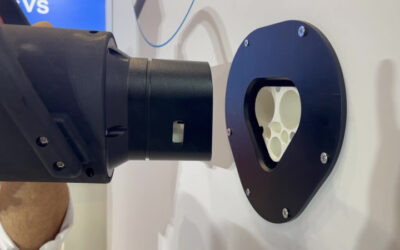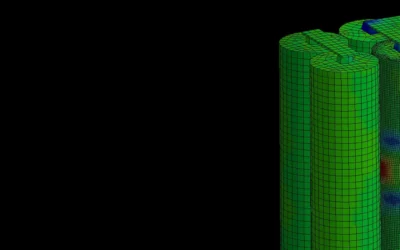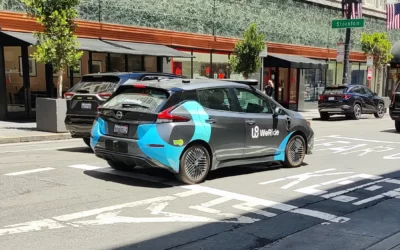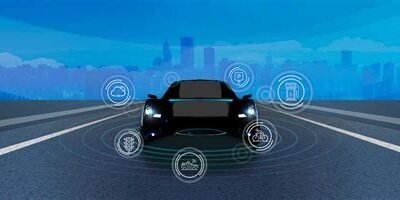More and more electric vehicles (EVs) are taking over the streets, and this is only the start of the E-Mobility wave: Germany wants to have 1 million of them by year-end 2022, in Norway having more EVs being registered than internal combustion engine vehicles is already the new normality and many countries around the world are introducing public subsidies to support the acquisition of EVs by private and public users.
The electrification of mobility allows the countries to reduce their dependency from fossil energies and fossil imports, as well as strongly supports the fulfillment of their decarburization targets.
But the higher the number of EVs, the bigger the need for a suitable charging infrastructure. Charging at home or at work are key pillars of this charging infrastructure, but a publicly accessible charging infrastructure where I can fast charge my car is the key enabler for the mainstream adoption of E-Mobility. What if I cannot charge at home or my employer does not offer me this possibility? What if I want to use my EV for a business trip or for holidays, how can I be sure that I will be able to recharge anywhere, any time and not having to wait hours until my car is full?


The challenge of erecting a fit-for-purpose public fast charging infrastructure is not to be underestimated. Where the fast charging points shall be installed to ensure that they are sufficiently used to pay back the investment? How complex and long is the permitting process? What if no sufficient network capacity is available to feed the fast charging points? How expensive and complex are the power network reinforcement works? How high are the grid fees? And it is for this reason why, although massively preferred by EV drivers using public chargers, the fast charging infrastructure is rather limited in many countries.
Uniper headquartered in Dusseldorf Germany, with 100 years of power generation experience wants to help closing this gap by leveraging its expertise in batteries and flexibility. For this purpose the company has developed a mobile, battery buffered fast charging solution that can be used whenever and wherever it is needed without grid connection –
MOVE. The Mobile Fast Charger is a power bank designed to fast charge EVs and it helps the smart development and expansion of low and medium voltage networks only to those locations where the demand is proven to exist.
The main components of this fast charging device are a battery pack with a capacity of approx. 320 kWh, a DC fast charger with two CCS connectors á 110 kW, a large advertising screen and the HMI with the connection to the internal and the external CPMS.
2 x CCS
2 x 110 kW = 220 kW peak charging power
320 kWh energy capacity
The charging levels of the mobile fast charging stations are digitally monitored by using specially developed IoT software. This enables not only predictive maintenance, but also an optimization of the logistics concept behind MOVE: empty charging columns are immediately exchanged against recharged ones and transported to the central charging stations (Energy Hubs see in figure 2).
In the Energy Hub, the charging stations act as grid buffers and thus simultaneously support the stability of the power grid. Positive primary control power (frequency containment reserve) can also be made available by simply interrupting the charging process of the columns. The electricity used is sourced exclusively from renewable energy sources, through Uniper’s renewable energy power plants. Uniper thus bridges the gap between sustainable mobility and grid services and actively contributes to enabling the energy turnaround.
A utility takes care of smart recharging in central charging hubs
Re-charged stations are transported to B2B customer sites
Decentral empty stations are picked up and transported to the central energy hubs.
Flexible fast chargers are used to provide fast charging opportunities at decentral locations of B2B customers
The transport of the charging stations is to be carried out by means of electric trucks. This is one of the future perspectives of MOVE. Furthermore, the charging stations represent a possible field of application for batteries that can no longer be used in electric vehicles, but still have sufficient capacity. The up cycling of the batteries extends their product life cycle and demonstrates a responsible use of resources in the MOVE project.
The current generation of mobile fast chargers (MFC) can serve up to 12 electric vehicles. The next generation of mobile fast chargers, which is planned for 2021, will be able to double this capacity. The commercial launch of MOVE by Uniper is planned in Germany in 2021 and it will be expanding to other European countries in the upcoming years. Partnerships with local players in The Netherlands, Sweden, UK and Hungary are currently under development.
According to J. Abel Cabezas, Project Manager of MOVE by Uniper, “the battery technology is one of the pillars of the decarbonization of the economy in general and of the transport in particular, with MOVE by Uniper we bring to the market a solution which we are confident will help enabling the mainstream adoption of E-Mobility overcoming the current infrastructural challenges of the stationary fast charging solutions.”.
More information about MOVE by Uniper: https://www.uniper.energy/services/E-Mobility-By-Uniper
Presented by J. Abel Cabezas Jiménez, Project Manager of MOVE by Uniper

















